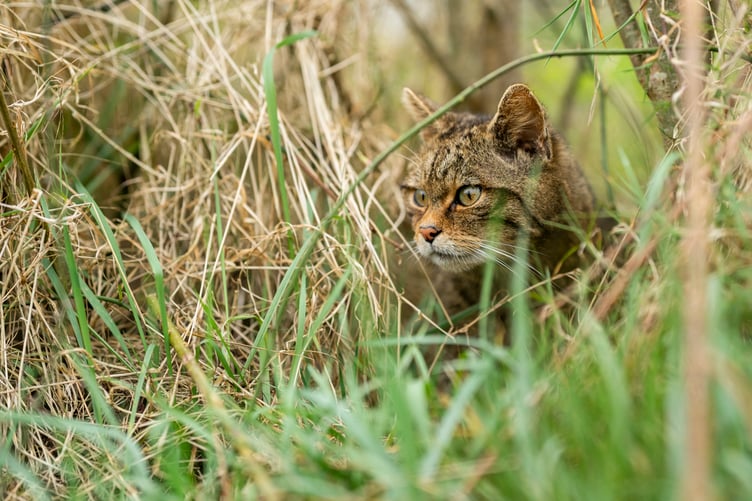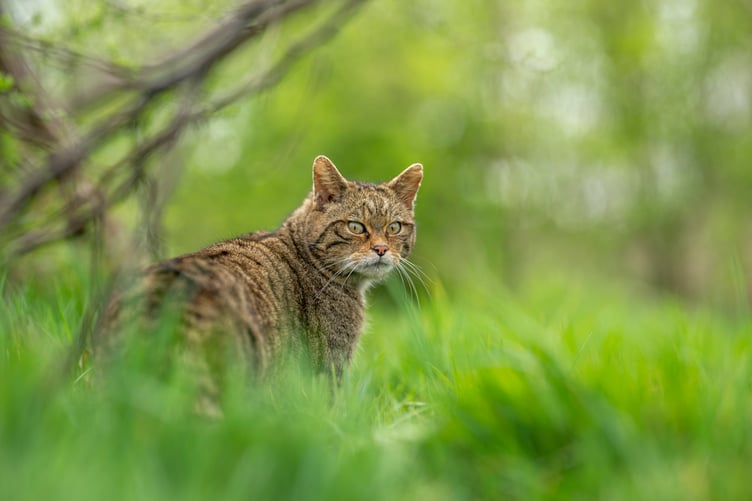EXPERTS have ruled the reintroduction of European wildcats to areas such as Exmoor would be feasible after more than a 100-year absence from the moor.
A new report published on Tuesday (November 18) reveals the Westcountry could support a reintroduction of the UK’s most critically endangered mammal.
The two-year study found a wildcat population could flourish in Westcountry landscapes, marking a vital next step in helping to secure the project’s future.
Independent research showed up to 80 per cent of people in the region were positive about wildcat reintroduction.

The investigation was undertaken by the South West Wildcat Project (SWWP), a partnership formed in 2023 of organisations led by Devon Wildlife Trust (DWT) which includes Forestry England and the Derek Gow Consultancy.
It concentrated analysis on four main aspects of wildcat reintroduction:
- Impact on people and communities
- Impact on other wildlife
- Impact on farming livestock and pets
- Long-term sustainability of a wildcat population after reintroduction
European wildcats, historically also known as ‘woodcats’, were once widespread in the Westcountry and other parts of Britain.
However, centuries of persecution and loss and fragmentation of woodland and rough grassland habitats saw them disappear from all but the Scottish Highlands.
The Westcountry’s last wildcats are thought to have survived until the mid-nineteenth century.
DWT’s Cat Jeffs, who leads SWWP, said: “It is exciting that this report suggests wildcats could be part of the region’s nature once again.

“The return of this critically endangered species would be another step in the restoration of our native wildlife and will help re-balance local ecosystems.
“Wildcats were once a widespread part of our countryside and today they remain an important part of woodlands throughout continental Europe, including Germany, France, Spain, and Italy.
“A lot of work remains to be done before the first wildcats could be released in the South West.
“Honest and open dialogue with stakeholders will be key to making sure the species and local communities could thrive alongside one another in the future.”
Ms Jeffs said there were no immediate plans to release wildcats, but the partnership was committed to developing plans for reintroduction, including securing funding to ensure the best chance of success.

Wildcats were given protected status in 1988 but are now classed as ‘critically endangered’ and at risk of extinction with as few as 115 individuals remaining in the wild.
Forestry England planner Abby Parravani said: “I am thrilled the feasibility report shows the suitability of South West England to reintroduce this missing native species, contributing to the restoration of ecosystems across this landscape.
“We are looking forward to the next phase as we move one step closer to returning wildcats to the West.”
Wildcats pose no significant risk to existing endangered wildlife populations such as bats and dormice as 75 per cent of their prey is small mammals, including voles, rats, wood mice, and rabbits.
They also are not a threat to people, domestic pets or farming livestock such as lambs, while commercial and domestic poultry can be protected in the same way as for foxes.




Comments
This article has no comments yet. Be the first to leave a comment.